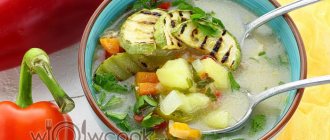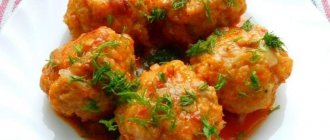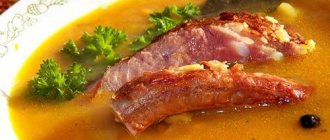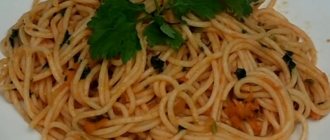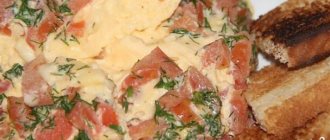Everything you wanted to know about this culinary method.
There is a culinary method, thanks to which the taste and color of food is preserved, pungent odor and bitterness are eliminated, food gets rid of germs, and it becomes easier to clean and process them. We're talking about blanching, a technique that many people ignore in the kitchen. Meanwhile, it is worth remembering about it more often, because thanks to it, food will be tastier and healthier.
What is blanching?
Blanching is a processing method in which the product is first immersed in boiling water (very briefly, for a few tens of seconds), and then doused with ice water. Instead of the last step, the product can be placed in a container filled with cold water with ice cubes, or placed under a stream of very cold tap water. Products can also be blanched over steam (in this case the process takes about one and a half times longer) or in a microwave oven.
What does it mean to blanch?
Blanch - what does it mean? A beautiful word from the professional vocabulary of cooks and confectioners implies short-term processing of products with steam or boiling water. For what purpose? What foods need to be blanched? And how to carry out this procedure? Let's go in order.
We suggest you familiarize yourself with Powdered milk substitute composition
Blanching means the process of briefly boiling, scalding or scalding with boiling water any food product, for example, fruits, vegetables, meat, fish. As a result of this process, the product “turns white”, hence the name of the procedure.
We found out what blanching means. Now let's determine its purpose.
The main purpose of blanching is to destroy some of the oxidative and other enzymes in vegetables and fruits. After all, we know that if you cut an apple and leave it on an open surface for a while, after a few minutes it will begin to turn brown. The same thing happens with some mushrooms, for example, boletus - when cut or even lightly pressed, they instantly turn blue. Therefore, you should start blanching no later than 10-12 minutes after you cut the fruit or vegetables.
Why blanch food?
- Thanks to blanching, products retain their rich color and taste, remain firm and elastic. At the same time, such processing puts a “barrier” to raw food and allows you not to be afraid of bacteria.
- Blanching relieves some vegetables of bitterness (for example, endive, kale), unpleasant odor or overly pungent taste. For example, blanching makes onions much more delicate.
- Blanched potatoes, from which we are going to make chips, will absorb less fat.
- The use of this culinary technology ensures that fragile leafy vegetables (spinach, kale, sorrel) do not fall apart during cooking.
- Thanks to blanching, hard vegetables and fruits do not lose their shape or become soft.
- By processing rice in this way, we rid it of excess starch.
- Blanched cabbage makes it easier to separate the leaves.
- Thanks to this method, you can easily remove the skin or rind from the fruit. It is enough to pour boiling water over them for a few seconds to quickly peel, for example, a tomato, peach or nectarine.
- It is important to note that this method of processing food practically does not deprive it of elements and vitamins: we lose only a small amount of vitamin C and protein.
Read also: White chocolate and mascarpone cake
What can you blanch?
Blanching when freezing food
You can blanch vegetables, fruits, as well as nuts, meat and fish. In addition, blanched nuts are easier to shell. Cooking meat in this way will help get rid of the pungent odor (emitted, for example, from bones).
By the way, blanching meat is especially useful if you are going to freeze it, as well as if you are going to make pate or canned food from it.
Blanching works very well just before freezing. By combining these two actions, we can be confident that when removed from the freezer, food will be firm, tasty and retain its natural color. This applies to all products that can be frozen, including mushrooms.
Since blanching does not last long, there can be no question of overcooking the food: it retains its structure. But it is worth keeping in mind that many products decrease in volume under the influence of short-term exposure to boiling water.
A good example is blanching cauliflower. It will make the vegetable softer, but at the same time it will remain crunchy, elastic and retain a beautiful color, and will not be too bitter. Cabbage prepared in this way can be safely added to a salad.
Eggplant storage
The pieces are removed from the water and dried on both sides using napkins. Place on a sheet of parchment and place in the freezer. Afterwards, take out the pieces and put them in a bag so that they take up less space.
Arya Stark in independent cinema: the best films of actors from “Game of Thrones”
“I’m crying”: Katya Kishchuk showed subscribers an engagement ring from rapper Slowthai
What Mikhail Efremov’s mother looked like in her youth (she was a beautiful actress)
To prevent the slices from sticking together, you can place pieces of parchment between them.
You can immediately remove the required number of pieces and place them in a frying pan or baking tray. This type of preparation does not require defrosting.
How to blanch food?
- Boil a pot of water.
- Hot water can be salted.
- Prepare a bowl of very cold water and throw a few ice cubes into it.
- Prepare the fruit or vegetables you will blanch by washing, peeling and cutting them (according to the recipe you are using).
- Place the prepared pieces in a saucepan with boiling water (for a few minutes - most often 2-3).
- After this time, remove them and immediately place them in a bowl of ice water. Wait until the food has cooled down. This will take a few minutes - usually it is recommended to cool for about as long (or a little less) as the blanching itself lasted.
- Remove the vegetables or fruits and dry them - done!
Read also: Birthday cake for the director
Duration of blanching of products:
Broccoli: 1 minute in boiling water, 1-2 minutes in cold water.
Cauliflower: 4 minutes in boiling water, 4 minutes in cold water.
Carrots (chopped): 2 minutes in boiling water, 2 minutes in cold water.
Carrots (whole): 5 minutes in boiling water, 5 minutes in cold water.
Asparagus: 2 minutes in boiling water, 2 minutes in cold water.
Green peas: 3 minutes in boiling water, 3 minutes in cold water.
Brussels sprouts: 3-4 minutes in boiling water, 4 minutes in cold water.
Celery: 3 minutes in boiling water, 3 minutes in cold water.
Legumes: 1-2 minutes in boiling water, 2 minutes in cold water.
Mushrooms: 2 minutes in boiling water, 2 minutes in cold water.
Stuffed cabbage rolls are a common and tasty dish made using minced meat, rice and cabbage leaves. Additionally, there are many other recipes according to which certain products are added to the minced meat. The main difficulty in preparing this dish is the need to soften and separate the cabbage leaves. They are quite hard, securely attached to the head of cabbage. Therefore, women have to make significant efforts to prepare these leaves. To do this, you can use methods with different features.
Eggplant for sauce
Those who like sauces or other fillings using eggplant can immediately freeze the puree. To do this, cut the whole eggplant lengthwise and place it on a baking sheet. Place in the oven at a temperature of two hundred degrees for forty minutes so that the flesh becomes tender and soft.
Remove the dough from the oven and cool. Then beat the pulp with a blender until the mass becomes homogeneous. Place the workpiece in containers and place it in the freezer.
To use the puree, you will need to transfer it to the refrigerator to defrost. Next, proceed directly to preparation.
Eljay's younger brother follows in the footsteps of his famous relative and plays music
Little Tiggy grew up in Africa among wild animals. Now she is 30 (photo)
Glare on the screen: a regular box will help you work outdoors in comfort
One of the simplest sauces involves the presence of:
- a couple of cloves of garlic;
- fresh greens.
- a couple of spoons of mayonnaise;
- smoked paprika;
- handfuls of walnuts.
The garlic needs to be chopped, as well as the nuts. Mix everything and season to taste. Sometimes I bake garlic, then it turns out to be a sauce made from baked vegetables. It is good for chicken, meat or fish. You can also dip chips in it and grease sandwiches with it. In general, the dish is quite versatile.
Traditional blanching method
The traditional method is to blanch the entire head of cabbage. This method is considered tedious and time-consuming. To do this, the head of cabbage is placed in a large pan of boiling and previously salted water.
The features of this method include:
- you need to have a really large saucepan in which the selected head of cabbage will fit;
- The pan needs to be filled halfway with water, then bring the water to a boil;
- before heating the water, you need to make sure that when lowering the head of cabbage into the pan, the water will not overflow;
- The core of the cabbage should be pierced with a serving fork, which will make it easy to move the vegetable into the pan;
- The outer leaves will soften in just a minute, but you will have to wait much longer for the inner leaves to soften, so as soon as the outer leaves become soft, you need to remove the head of cabbage and trim off these leaves;
- then the head of cabbage is again lowered into the water to soften the next layer of leaves.
Read also: Sandwich bread harry s calorie content
Due to the specificity of the process, you will have to put in a lot of effort, and it will also take quite a lot of time to soften all the leaves.
What are shallots?
The shallot variety is a plant belonging to the Allium family. This is a separate and complete species that has its own distinctive qualities. Turnips and green feathers (leaves) are used for culinary purposes.
Its bulbs and herbs are used for cooking. Shallots are often perceived as an unripe onion head. But this is a separate culture with its own botanical and culinary properties.
The species has several names, which depend on the region of growth. It is called Alexandrian, family, potato or kushchevka. But the traditional name stuck to a greater extent.
In appearance, it is more reminiscent of garlic cloves than the usual onions. Its color can vary from white or yellowish to red and even purple. It depends on what type you belong to.
Chemical composition of heirloom onions
In terms of the amount of microelements, vitamins and minerals, the family type (shallot) is much healthier than the onion variety. The following elements give it value:
- Several types of essential oils provide antimicrobial and regenerative properties;
- Phytoncides prevent the emergence and proliferation of bacteria;
- Vitamins B, E and PP - improve metabolism and activate oxidative processes in the body;
- Folic acid regulates blood composition, strengthens the heart and blood vessels, and has an anti-carcinogenic effect;
- Nickel is involved in the process of hematopoiesis, normalizes fat metabolism in the body;
- Germanium maintains the immune system, activates the delivery of oxygen to various organs and tissues;
- Titanium is necessary for the healthy functioning of the lens of the eye, bones, hair, and nails. Important for maintaining healthy joints.
It contains many other macro- and microelements: calcium, copper, manganese, zinc, fluorine, cobalt, iodine, iron. It is unique in that it contains a large number of rare substances that are difficult to find in other plant products. These include chromium, vanadium, selenium and cobalt.
Calories and nutritional value
Shallots are low in calories. Per 100 g of fresh product – 72 Kcal. The green part of the plant contains even fewer kilocalories - only 17 - 20 kcal per 100.
100 g of fresh turnip contains 2.5 g of protein, 0.1 g of fat and 16.8 g of carbohydrates. This composition means that the raw head is a low-carbohydrate product, practically free of fat, and also has a low calorie content. Therefore, eating it fresh or baked is useful for everyone who is watching their caloric intake.
Beneficial features
The listed substances determine its properties, which bring invaluable benefits to the body:
- Improves the body's resistance to viral infections;
- Strengthen the walls of blood vessels, stabilize blood pressure, resist the development of atherosclerosis;
- Eliminate the causes and symptoms of anemia. The presence of vitamin B6 in combination with other elements promotes the full formation of red blood cells and helps maintain the optimal amount of homocysteine in the blood;
- Cleanse the body of toxins and waste, fight carcinogens;
- Activate digestion, eliminate symptoms of dysbacteriosis, flatulence;
- They have a diuretic and choleretic effect, helping to comprehensively cleanse the body;
- Helps prevent seasonal vitamin deficiency;
- Strengthen eye health;
- Improve skin condition, reducing itching and irritation;
The large amount of flavonoids in shallots contributes to the anticarcinogenic effect of this product.
Contraindications and possible harm
There are several serious contraindications to consuming this vegetable. Those who suffer from stomach ulcers, colitis or pancreatitis should avoid it. Onions increase stomach acidity, which can worsen the condition.
It is undesirable for acute or chronic kidney diseases or other problems with the genitourinary system. Frequent use leads to fluid retention in the body, which is harmful if you have kidney problems.
If disturbances in the functioning of the liver and digestive tract organs are chronic, you should pay attention to possible exacerbations. It is better to avoid eating the vegetable at this time. Increased stomach acidity in itself is a contraindication to frequent consumption of any Alliaceae species.
How to blanch cabbage
Author Zlo asked a question in the Other culinary
What does it mean to blanch cabbage in water? and got the best answer
Answer from Elena[guru] Blanching, scalding, steaming are different names for the same process used in canning fruits and vegetables.
Blanch with water or steam. Whole or chopped fruits and vegetables are immersed in boiling water for 2-5 minutes. The water is heated so that during blanching its temperature is 80-100 degrees. The duration of blanching is set depending on the type of fruit or vegetable, their degree of ripeness, the consistency of the pulp, etc.))
What you will need
Cooking
- Knife and cutting board
- Large saucepan with lid
- Colander or sieve
- Skimmer
- Timer
Steaming
- Knife and cutting board
- Expanding steam basket
- Pan with lid
- A bowl
- Fine mesh sieve
- Skimmer
- Timer
Using and storing blanched cauliflower
- Baking tray with sides
- Tight-sealing food containers
- Hand blender
- Pot
